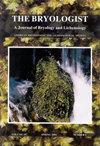海拔3000米的苔藓植物群落
IF 1.5
4区 生物学
Q4 PLANT SCIENCES
引用次数: 2
摘要
摘要一个长而陡峭的海拔梯度为在一个小的地理区域内研究大量物种的生态位提供了机会。在加利福尼亚内华达山脉沿此梯度,记录了253个样地的所有苔藓植物。随着物种的发生,记录了苔藓植物生长地点的湿度、倾斜度、遮荫度和底物类型。将这些生态特征的平均值(即物种生态位的集中趋势)制成表格,并确定该物种是该生态位维度的专家还是通才。再转向行会,使用RCLUS程序,利用地块中的共生现象将物种聚集到生态联盟中。这些联盟占据了物种协调的不同部分,但它们揭示了比协调本身更微妙的东西。山麓苔藓植被带与高海拔苔藓植被带之间存在明显的过渡带。其他交错带不明显;例如,我们没有发现针叶林带和亚高山带之间有明显的界限,而是物种的更替是增量的和个人的。对于了解该物种的博物学家来说,能够从生态学上描述它们的特征有助于思考群落的聚集性和进化支的保守性。本文章由计算机程序翻译,如有差异,请以英文原文为准。
Niches and guilds of bryophytes along a 3000-meter elevational gradient
Abstract. A long and steep elevational gradient presents the opportunity to study the niches of a large number of species within a small geographic area. Along such a gradient in the Sierra Nevada of California, all bryophytes were recorded in 253 plots. Along with species occurrence, the wetness, incline, shadiness and substrate type of the spot where each bryophyte was living were recorded. The average of these ecological traits (i.e., the central tendency of the species niche) was tabulated along with a determination of whether the species was a specialist or generalist for that niche dimension. Moving to guilds, co-occurrence in plots was used to aggregate species into ecological coalitions using the program RCLUS. These coalitions occupy different parts of an ordination of species, but they reveal more subtlety than the ordination itself. An ecotone was evident between the foothill bryophyte vegetation zone and a higher elevation zone. Other ecotones were not obvious; for example, we did not detect a sharp boundary between a conifer zone and a subalpine zone, rather the turnover of species was incremental and individualistic. For naturalists who know the species, being able to characterize them ecologically contributes to thoughts of the assembly of communities and the conservatism of clades.
求助全文
通过发布文献求助,成功后即可免费获取论文全文。
去求助
来源期刊

Bryologist
生物-植物科学
CiteScore
2.40
自引率
11.10%
发文量
40
审稿时长
>12 weeks
期刊介绍:
The Bryologist is an international journal devoted to all aspects of bryology and lichenology, and we welcome reviews, research papers and short communications from all members of American Bryological and Lichenological Society (ABLS). We also publish lists of current literature, book reviews and news items about members and event. All back issues of the journal are maintained electronically. The first issue of The Bryologist was published in 1898, with the formation of the Society.
Author instructions are available from the journal website and the manuscript submission site, each of which is listed at the ABLS.org website.
All submissions to the journal are subject to at least two peer reviews, and both the reviews and the identities of reviewers are treated confidentially. Reviewers are asked to acknowledge possible conflicts of interest and to provide strictly objective assessments of the suitability and scholarly merit of the submissions under review.
 求助内容:
求助内容: 应助结果提醒方式:
应助结果提醒方式:


